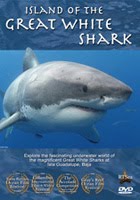 Where I live in Southern California, it's been making the news that Humboldt squid, also known as jumbo squid, have been showing up in greater numbers and local sportfishermen having been having a field day, catching the squid in the early evening hours. In just the past few days, over 400 squid have been reeled in. While edible (if you like calamari rings the size of small tires!), the squid are more known for putting up quite a fight. These are very large and aggressive squid, reaching a body length of as much as 6 feet and weighing 100 pounds.
Where I live in Southern California, it's been making the news that Humboldt squid, also known as jumbo squid, have been showing up in greater numbers and local sportfishermen having been having a field day, catching the squid in the early evening hours. In just the past few days, over 400 squid have been reeled in. While edible (if you like calamari rings the size of small tires!), the squid are more known for putting up quite a fight. These are very large and aggressive squid, reaching a body length of as much as 6 feet and weighing 100 pounds. There's a very important developing story behind these occasional encounters with Humboldt squid along the eastern Pacific coast. Their traditional range was along the Mexican coast at a depth of about 500 to 600 feet. What determined their range was temperature and natural predators - two factors that dictate territories for many ocean species. But those factors have been changing.
There's a very important developing story behind these occasional encounters with Humboldt squid along the eastern Pacific coast. Their traditional range was along the Mexican coast at a depth of about 500 to 600 feet. What determined their range was temperature and natural predators - two factors that dictate territories for many ocean species. But those factors have been changing.Humboldt squid have been reported now as far south as Chile and as far north as Alaska. And they have been reported more and more in shallower waters, disrupting the populations of several commercially fished species like Salmon in the Pacific Northwest. These squid are particularly ravenous, with a very high metabolism, and they have been a major disruption to fishermen - not to mention what these predators are doing to their newly targeted prey populations.
It has been theorized that changes in ocean temperatures and loss of natural predators, like sharks and whales, are the root causes behind the squids' appearance in areas never before seen. And it poses a risk to fish populations and even divers - these squid are very fast, hit hard, and are very aggressive - even cannibalistic when a squid is injured in a feeding frenzy.
Scott Cassell, head of the Undersea Voyager Project, has become a sort of unofficial "squid guy," having spent considerable time observing and filming these animals. He has appeared in several documentaries talking about these animals and has a healthy respect for them and a measure of concern as to how they can disrupt local ecosystems along the eastern Pacific coast.
I have been working with Scott on several projects and we plan on diving with the squid shortly in Northern California. It's not something to be taken lightly. If he knows he will be having some close encounters, Scott typically wears a set of protective armor and chain mail and he has had broken bones thanks to these powerful cephlapods.
Ocean climate change through global warming and a disrupted predator-prey relationship through overfishing - two man-made changes that could have unintended ecological consequences with the expansion of the Humbodlt squid's hunting territory.
Read Los Angeles Times news article.







2 comments:
This squid is not really what the squid is supposed to look like. I am really curious with this.
Dining Tables: I'm not sure what you mean by your comment. The pictures shown in the post are most certainly those of the Humboldt squid. (The large picture is of a younger specimen.) Don't confuse this squid with the "Giant Squid" which is even larger.
I have been working with Scott Cassell on filming more Humboldt squid. (We didn't dive this week because of rough seas. But we saw plenty of squid brought in by sportfishermen.) Scott has spent more time with these squid that probably any one else.
Post a Comment